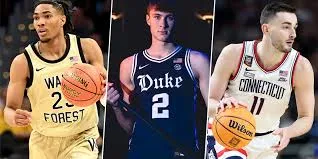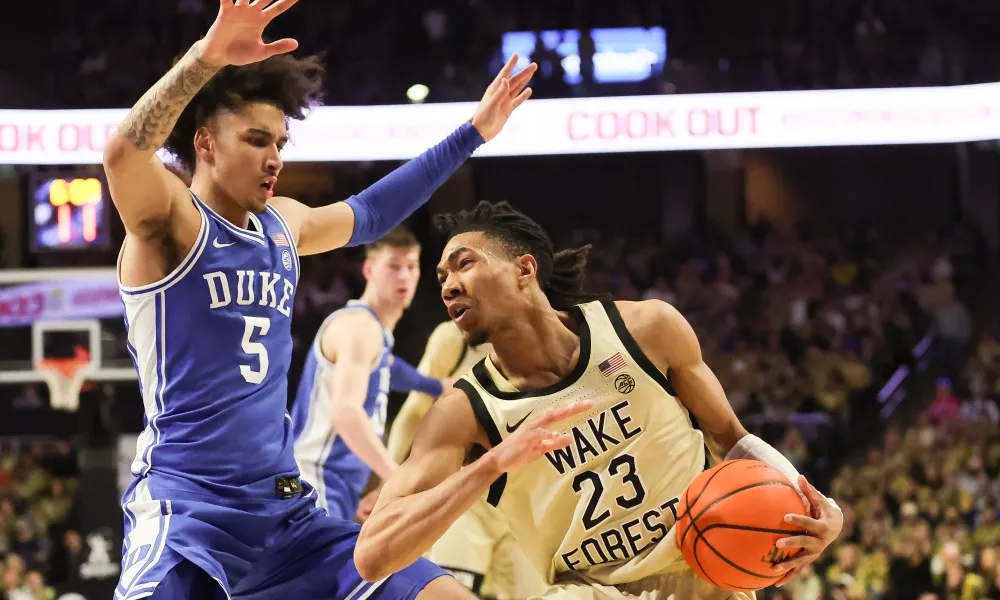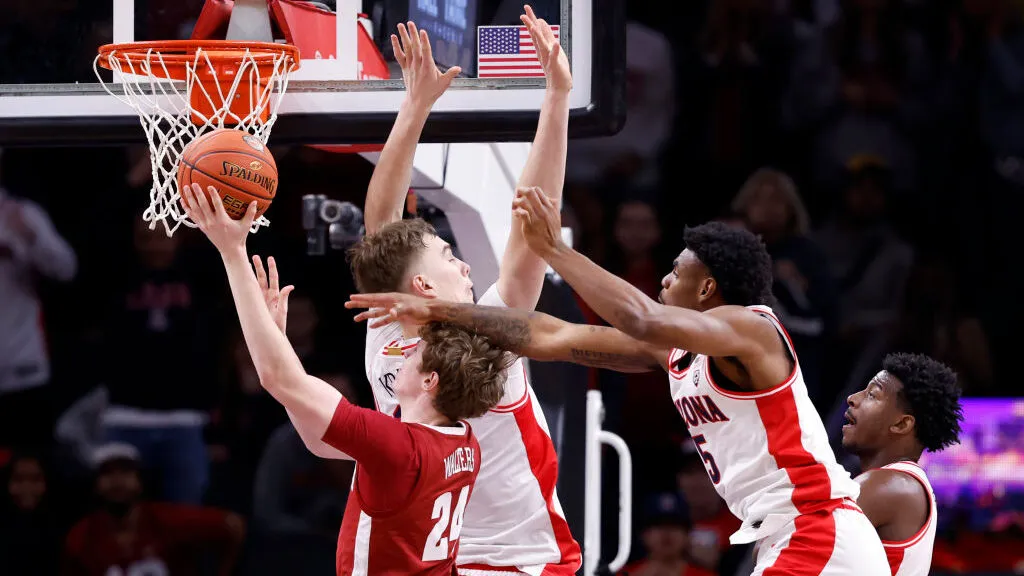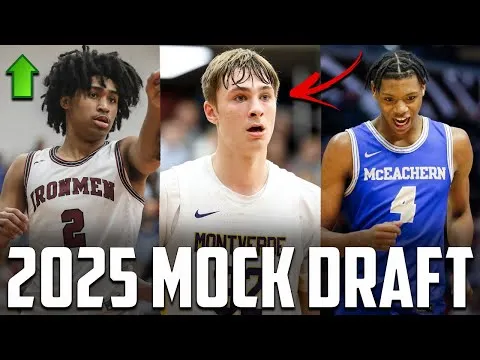Table of Contents
Introduction
The 2025 NBA Draft is shaping up to be a game-changer for college basketball players. For many young athletes, this is the moment they’ve been working towards their entire careers. But here’s the twist: more and more college players are transferring to different schools with hopes of boosting their draft prospects. Why is this happening, and what does it mean for the future of the draft?
In recent years, the landscape of college basketball has seen a surge in player transfers. Some players are seeking more playing time, while others are looking for better coaching or stronger teams. This shifting scenery isn’t just about changing uniforms; it’s a strategic move aimed at improving their chances of making it big in the NBA. With new opportunities on the horizon, these transfers could have a significant impact on the draft.
So, what’s the big deal about transfers? Simply put, transferring to a new school can offer players a chance to shine brighter on a bigger stage. Whether it’s showcasing their talents in high-profile games or fitting into a system that plays to their strengths, the right transfer can make all the difference. It’s not just about switching teams—it’s about positioning themselves for a successful future in the NBA.

The Impact of Transfers on the Draft
When college basketball players decide to transfer to a new school, they’re not just changing their address; they’re making a strategic move that can significantly influence their NBA draft prospects. So, what’s driving this trend, and how does it impact their future in professional basketball?
Why Players Transfer
There are several reasons why college players might choose to transfer. For many, it’s all about finding more playing time. At their current school, they might be sitting on the bench or not getting the minutes they need to develop their skills and showcase their talents. By moving to a new team where they’re expected to play a bigger role, they can improve their game and get noticed by NBA scouts.
Another reason is the quality of coaching and facilities. Players often transfer to join programs with better training resources or renowned coaching staff. A change in environment can mean better development opportunities, which is crucial for those aiming to make a strong impression on draft day.
Finally, transferring can also boost a player’s exposure. Being part of a high-profile program or competing in big games can attract more attention from scouts and media. This increased visibility can be a game-changer when it comes to moving up in the draft rankings.
How Transfers Affect Draft Prospects
The impact of transferring isn’t always straightforward. Adjusting to a new team can be challenging. Players need to quickly adapt to different playing styles and team dynamics. However, if they manage to fit in well and perform at a high level, the benefits can be substantial.
Building new team chemistry is another factor. A player’s ability to gel with new teammates and integrate into the team’s system can make a big difference in their performance. Success on the court can lead to a rise in draft prospects, as scouts look for players who can thrive in various environments.
Moreover, transferring to a team with high visibility can provide a significant boost. Competing in nationally televised games or high-stakes tournaments can highlight a player’s skills and potential, making them more appealing to NBA teams.

Notable Transfers for the 2025 NBA Draft
As we look ahead to the 2025 NBA Draft, several college basketball players who have made high-profile transfers are capturing attention. These players are not just shifting teams; they’re positioning themselves for a potential leap into the NBA. Let’s spotlight some of the most intriguing transfers and explore what they bring to the table.
Top Transfers to Watch
Mackenzie Mgbako
Mackenzie Mgbako’s transfer from Duke to Indiana has generated considerable excitement. At Duke, Mgbako showcased his scoring ability and versatility, averaging 14.3 points and 6.2 rebounds per game. Now, with his move to Indiana, he’s expected to play a pivotal role in the Hoosiers’ lineup. Many are eager to see how his adaptation to Indiana’s fast-paced style will enhance his draft prospects.
Hunter Dickinson
Hunter Dickinson’s move from Michigan to Kansas is another transfer to watch closely. Known for his dominant presence in the paint, Dickinson averaged 18.6 points and 9.1 rebounds per game at Michigan. At Kansas, he will be a key player under Coach Bill Self’s system. His ability to adapt to Kansas’ up-tempo play and showcase his skills on a national stage will be crucial for his draft stock.
Isaiah Collier
Isaiah Collier’s transfer from USC to Kentucky is creating a buzz in college basketball. Collier, a top recruit known for his playmaking and scoring prowess, averaged 15.7 points and 6.4 assists per game at USC. Now joining Kentucky, he’s expected to step into a significant role, potentially elevating his game and visibility. His performance in the Wildcats’ high-profile games will be critical as he aims to improve his draft positioning.Each of these players brings unique talents and has made strategic choices with their transfers. Their performances at their new schools will be vital in shaping their NBA futures. As they adapt to new environments and roles, all eyes will be on how they leverage these opportunities to boost their draft prospects.
Factors Influencing Transfer Success
When college basketball players make the leap to new teams, several key factors can influence their success and ultimately their NBA draft prospects. Understanding these factors can shed light on how well a transfer might perform and what they need to thrive in their new environment.
Program Fit
One of the most crucial aspects of a successful transfer is how well a player fits into their new program. A player’s skills need to align with the needs of their new team. For instance, if a player is known for their scoring ability but joins a team that focuses heavily on defense, they might struggle to showcase their strengths. The compatibility between a player’s abilities and the team’s style of play can greatly impact their performance and visibility.
The coaching style and system of the new team also play a significant role. For example, if a player transfers to a team with a coach who emphasizes fast breaks and perimeter shooting, it can enhance the player’s strengths if they are adept in these areas. Conversely, if the team’s system is vastly different from what the player is used to, it might take time to adjust and make an impact.
Player Development
Individual skill development is another critical factor. Transfers often have the opportunity to work with new coaching staff and utilize advanced training facilities. For instance, if a player moves to a school with a strong reputation for developing talent, such as Kentucky under Coach John Calipari, they might benefit from specialized training that can refine their skills and boost their draft stock.
Additionally, a player’s commitment to personal growth and improvement can significantly influence their success. Those who dedicate extra time to working on their weaknesses and enhancing their strengths are more likely to make a strong impression.

Exposure and Visibility
Exposure plays a crucial role in the draft process. Transfers who join high-profile programs or compete in major conferences, like the ACC or Big 12, often have more opportunities to showcase their talents on national television and in big games. For example, playing in high-stakes tournaments or nationally televised matchups can attract the attention of NBA scouts and increase a player’s draft stock.
Performance in these key games can be a game-changer. A standout performance in a crucial matchup or a high-profile tournament can significantly boost a player’s visibility and make them more attractive to NBA teams.
Challenges and Opportunities for Transfers
When college basketball players make the decision to transfer, they’re stepping into a new set of challenges and opportunities. Understanding these can provide a clearer picture of what they face as they aim to make a significant impact and improve their chances for the 2025 NBA Draft.
Challenges Faced by Transferring Players
One of the main challenges for transferring players is adjusting to a new team’s culture and expectations. Every team has its own unique environment, and integrating into this new setting can be tough. For example, a player coming from a more relaxed program might find the intense atmosphere of a top-tier team challenging. Adapting to different coaching styles, team dynamics, and expectations can be a significant hurdle.
Another challenge is overcoming potential setbacks, such as injuries or academic adjustments. A player might face difficulties in adapting to the new team’s playbook or encounter physical issues that could impact their performance. Managing these setbacks while trying to prove their value to scouts can be a balancing act.
Opportunities Created by Transfers
Despite the challenges, transfers also present several opportunities. One major advantage is the chance to showcase improved skills and versatility. A player moving to a new team can often highlight different aspects of their game that weren’t as visible at their previous school. For instance, if a player joins a team that emphasizes their shooting skills more than their old team did, they can use this opportunity to demonstrate their range and accuracy.
Networking and building relationships with NBA scouts and coaches is another valuable opportunity. By performing well in a new, high-profile program, transfers can gain exposure and create connections that can lead to future professional opportunities. Strong performances in key games and tournaments can put them on the radar of NBA teams and improve their draft stock.
Case Studies: Successful Transfer Stories
Examining past transfers who have made a significant impact in the NBA can offer valuable insights into how current college players might leverage their own transfers. These success stories highlight how strategic moves and adaptability can pay off in a big way.
Historical Examples of Transfer Success
Khalil Whitney
Khalil Whitney’s transfer from Kentucky to Arizona is a prime example of how a change in environment can elevate a player’s career. At Kentucky, Whitney struggled to find consistent playing time, averaging just 3.3 points per game. However, his move to Arizona provided him with a fresh start and a more prominent role. At Arizona, Whitney thrived, showcasing his scoring ability and defensive skills, which caught the attention of NBA scouts. His ability to adapt and excel in a new setting was instrumental in his subsequent NBA success.
Jalen Hurts
Though primarily known for his football career, Jalen Hurts’ transition from Alabama to Oklahoma is a notable example of a successful transfer in the world of sports. Hurts initially struggled to secure his starting position at Alabama but flourished after transferring to Oklahoma. His standout performances and leadership at Oklahoma led to significant attention from NFL scouts, showcasing how a transfer can positively impact a player’s visibility and career trajectory.
Ayo Dosunmu
Ayo Dosunmu’s transfer from Illinois to the NBA is another compelling story. After a standout career at Illinois, Dosunmu declared for the NBA Draft, and his successful transition from college basketball to the professional ranks underscored the benefits of a strong college performance and strategic timing. His impressive college career, marked by leadership and consistent performance, played a crucial role in his draft success and subsequent NBA career.
These examples illustrate that while transfers can come with their challenges, they also offer opportunities to reinvent and elevate one’s game. Players who successfully adapt to new environments and leverage their new roles can significantly enhance their draft prospects and professional careers.
By looking at these success stories, current college players can gain inspiration and insights into how to make the most of their own transfers, paving the way for future success in the NBA.
Expert Opinions and Predictions
When it comes to predicting the impact of college basketball transfers on the 2025 NBA Draft, insights from coaches, scouts, and analysts provide valuable perspectives. Their expertise helps us understand how transfers might shape the draft landscape and which players could make the biggest splash.

Insights from Coaches and Scouts
Coaches and scouts closely observe the dynamics of player transfers, offering crucial insights into how these moves might affect draft prospects. According to Coach Mike Krzyzewski, formerly of Duke, “Transfers can bring a fresh energy to a team, but it’s essential to see how they adapt to new systems and coaching styles. The ability to quickly integrate and perform under pressure is what sets apart those who succeed.”
Scouts often focus on how well a transferring player adjusts to their new team’s playing style. For example, NBA scout David Aldridge notes, “Transfers who excel in adapting to different styles of play and demonstrating versatility often catch the eye of NBA teams. It’s not just about raw talent but also how a player can fit into various systems.”
Predictions for Transfer Success
As we approach the 2025 NBA Draft, several transfers are drawing significant attention from experts. Players like Mackenzie Mgbako, who transferred from Duke to Indiana, are predicted to be strong draft candidates. Analysts suggest that Mgbako’s ability to thrive in Indiana’s high-energy environment could elevate his draft stock.
Similarly, Hunter Dickinson’s move from Michigan to Kansas is seen as a potential game-changer. Experts believe that Dickinson’s skill set, combined with Kansas’ competitive program, could boost his visibility and draft prospects. According to basketball analyst Chad Ford, “Dickinson’s performance at Kansas will be closely watched, and if he can maintain his strong play, he’s likely to rise in the draft rankings.”
Isaiah Collier, who transferred from USC to Kentucky, is another player expected to make waves. Analysts are keen to see how Collier’s playmaking ability and scoring prowess translate into the high-profile Kentucky program. “Collier’s transition to Kentucky could be a pivotal moment for his draft prospects,” says Ford. “His ability to excel in a top-tier program will be crucial for his draft positioning.”
Conclusion
As we look forward to the 2025 NBA Draft, the role of college basketball transfers is becoming increasingly significant. These players are not just moving to new teams; they’re making strategic decisions that could shape their future in professional basketball. Understanding how transfers influence draft prospects can offer valuable insights into which players might make a big impact in the upcoming draft.
Transfers provide a fresh start and new opportunities for players aiming to enhance their draft stock. By moving to high-profile programs or teams that better suit their playing style, these athletes can showcase their talents on a larger stage. Successful transfers often find themselves in the spotlight, with their performances in new environments significantly affecting their draft potential.
However, the path isn’t without challenges. Adapting to a new team’s system, overcoming setbacks, and building chemistry with new teammates are all part of the process. How well players manage these challenges can determine their success and impact in the draft.
By examining notable transfer stories and expert predictions, we see that strategic moves and adaptability can lead to significant rewards. Players like Mackenzie Mgbako, Hunter Dickinson, and Isaiah Collier are prime examples of how transfers can enhance draft prospects and set the stage for future success.
In essence, transfers are more than just a change of scenery; they’re a crucial step in a player’s journey to the NBA. As we approach the 2025 NBA Draft, keeping an eye on these transfers and their performances will be key to understanding who might emerge as top draft picks and future NBA stars.




